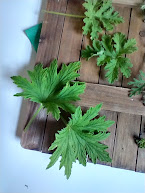Here are three Perennial herbs that you can plant in your fall garden so you can enjoy the flowers and eating them next year.
Edible flowers are a great addition to the landscape. They have long-lasting flowers that not only add to the look of the garden space, but also add great flavors colors, and scents to your food dishes. These three are easy to grow and simple to use.
Perennials are a great plant to add to the garden at the end of the season so they can establish over winter and emerge for your enjoyment in Spring.
Chives (Allium schoenoprasum)
I recommend Common Chives, rather than Garlic chives. Common Chives flower first thing in the spring when few other things are flowering and the flowers can be used a number of ways. I love to make herbal vinegar with my chive blossoms. It is a lovely pink color with the gentlest flavor of onion, You can also crumble the flowers into a salad or to flavor oil dipping sauces. Later when the flowers are finished you can sprinkle the chopped leaves sprinkled over baked potatoes, salads or pizza.
Add them to your landscape where you want a change in texture as the thin blade-like leaves will fountain out as the plant gets older.
Chives are great in vinegar and salads as an edible flower and you can find several recipes on this blog.
Another common name for bee balm is bergamot, as an herbal tea is is a great substitute for the bergamot oil in black tea that flavors Earl Grey. The leaves or flowers of Monarda didyma can also be used fresh, chopped finely like you would use fresh oregano to flavor pasta dishes, in salad dressings or on your homemade pizza.
To use Bee Balm in recipes, check out these posts.
English Lavender (Lavandula angustifolia)
Like bee balm, lavender is another plant we tend to think of mostly as an ornamental flowering perennial rather than an edible herb. You’ll find a number of different species at the garden center, but English lavender, Lavandula angustifolia, is the one often used in recipes and garden. It tastes much like it smells—sweet and floral-like. Its fresh or dried flowers can be used in marinades and cooking blends, sprinkled over ice cream, steeped in lemonade or cocktails, or used to flavor shortbread cookies and other baked goods.
The plant must be well mulched in winter to come back the following year, but the tall flower spikes with purple buds and flowers can bloom from June to September. When not blocking it has a needle-shape leaf in a silver-gray color that adds a bit of scent and texture to your garden landscape.

.jpg)






.jpg)


.jpg)

